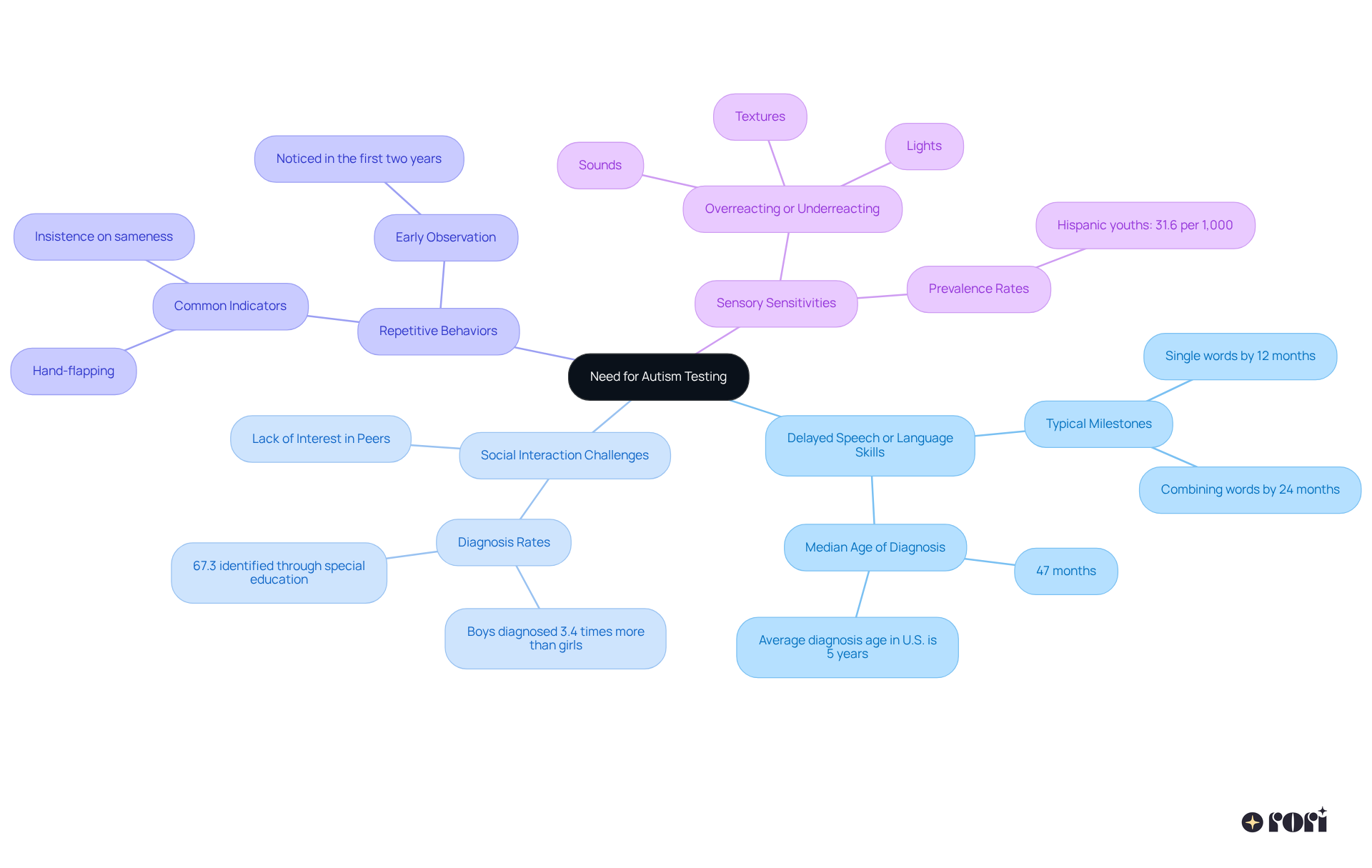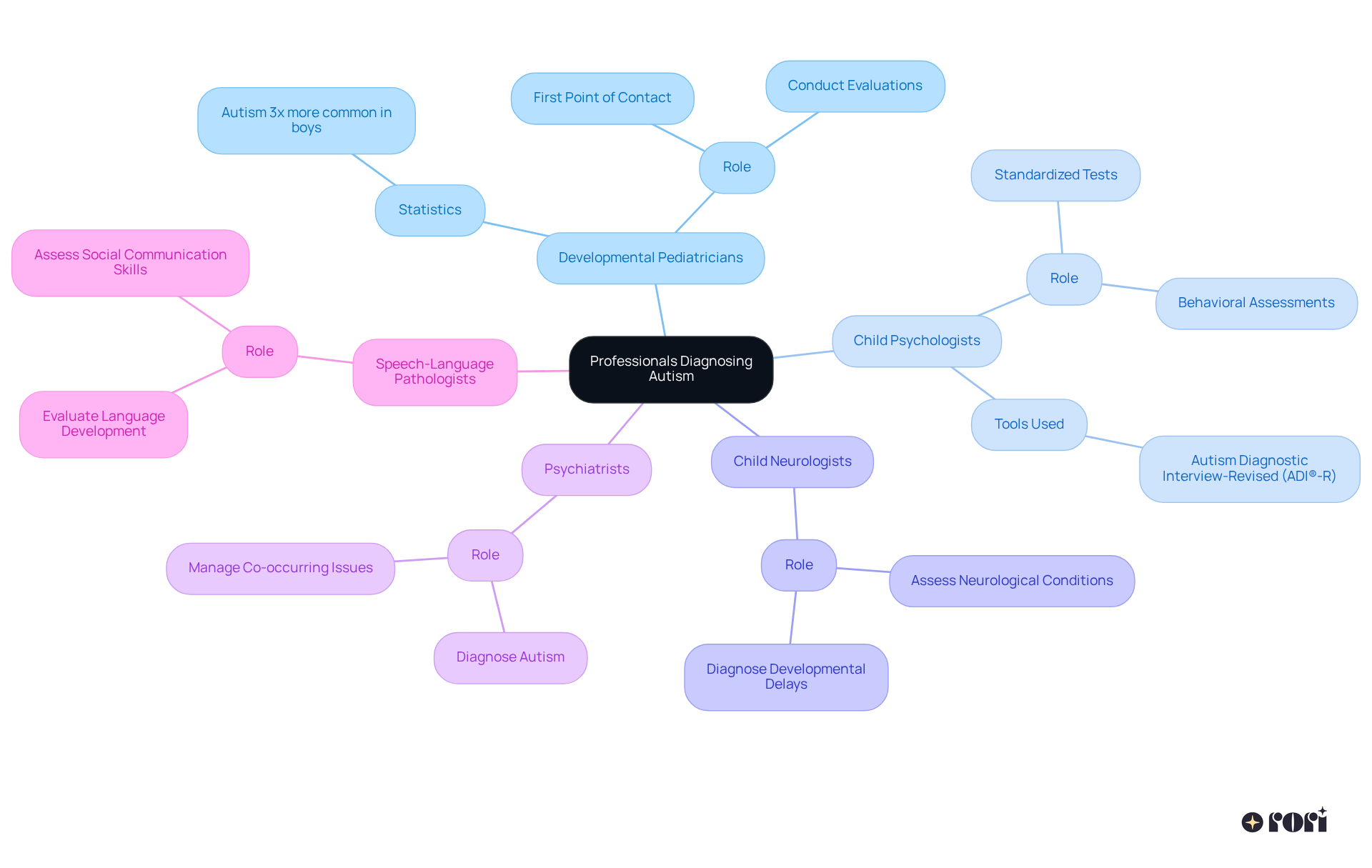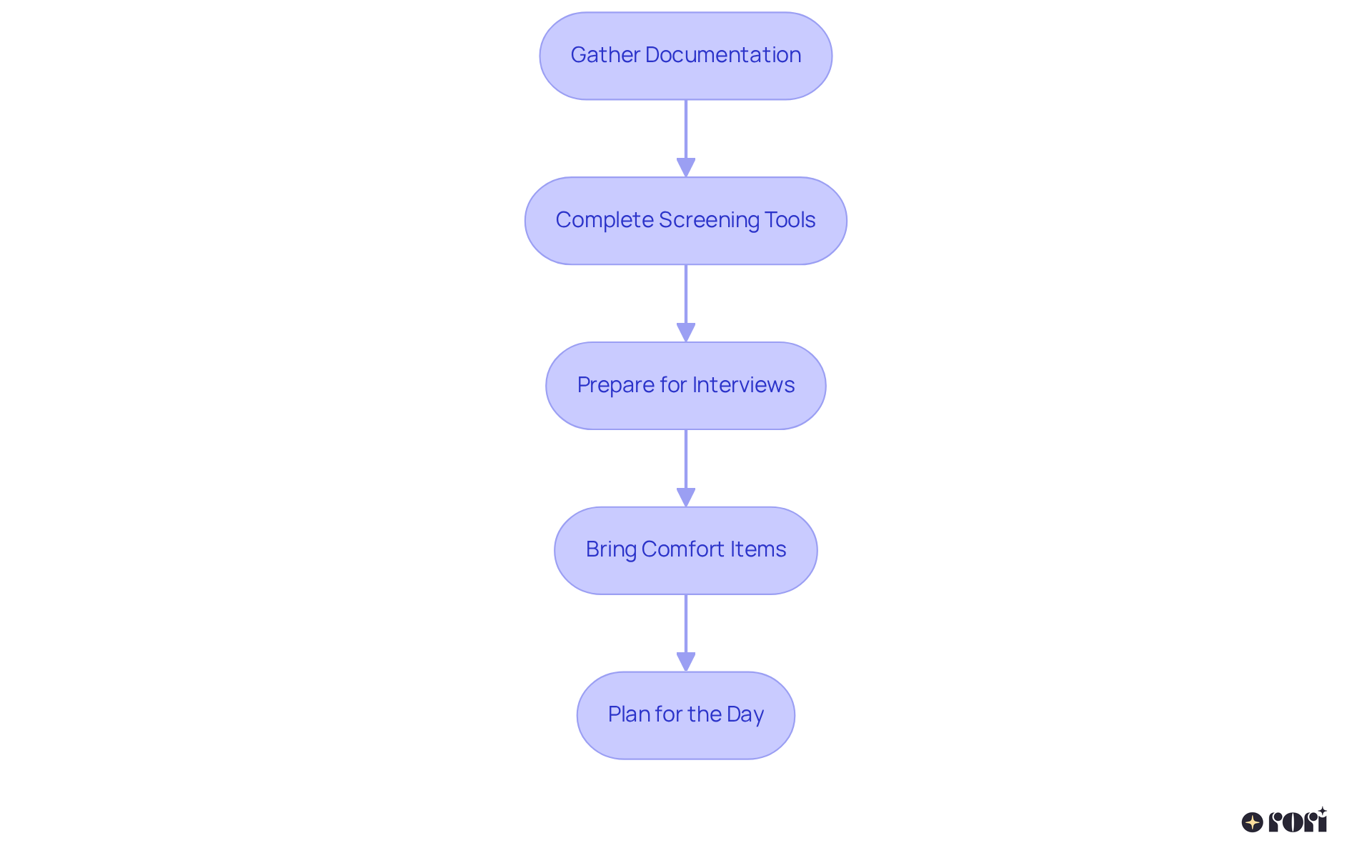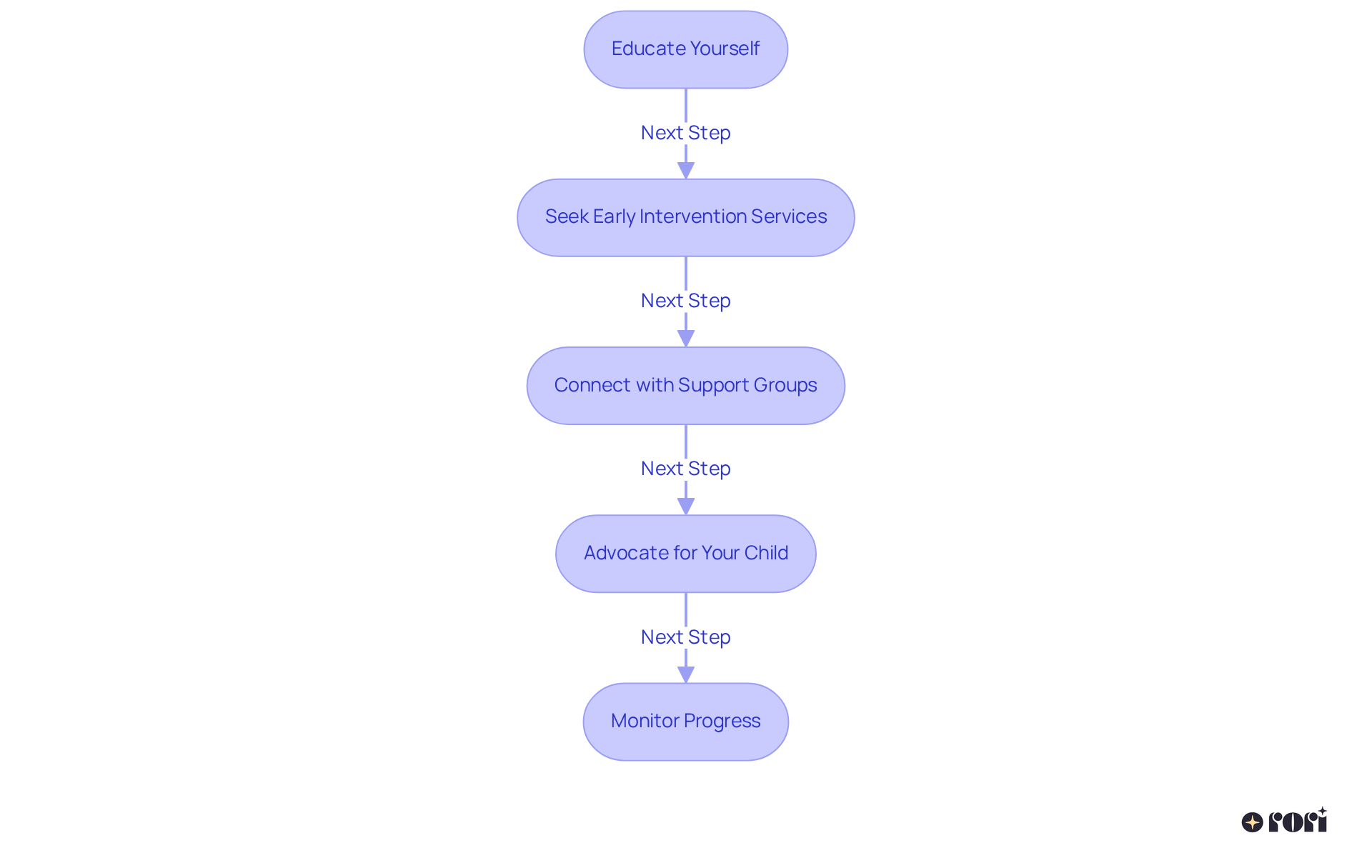Overview
This article is here to help you navigate the important steps in understanding who conducts autism testing and how to prepare for the assessment process. Early observation of developmental signs is crucial, and it’s essential to know the various professionals involved in the diagnosis.
We’ll also share some preparation strategies to ensure a thorough evaluation. Remember, early intervention can make a significant difference in outcomes for children with autism. Let’s explore this together!
Introduction
Recognizing the signs of autism in children can feel overwhelming for many parents. With the complexities of developmental disorders, it’s no wonder families often find themselves asking, 'What’s next?' Understanding who conducts autism assessments and how to prepare for the testing process can truly make a difference on the journey toward diagnosis and intervention. Did you know that the average age of diagnosis hovers around five years? This can leave many families wondering how to ensure their child receives a timely and accurate evaluation.
In this article, we’ll explore essential steps for navigating autism testing. We’ll provide valuable insights and practical tips to help you support your child's developmental needs. Let’s explore this together! We’re here to help you every step of the way!
Identify the Need for Autism Testing
To determine if your child might need an evaluation for developmental disorders, it’s important to keep an eye on their behavior and development for certain signs. Here are some key indicators to watch for:
- Delayed Speech or Language Skills: If your little one isn’t hitting typical speech milestones—like saying single words by 12 months or combining words by 24 months—it could be a cause for concern. Did you know that the median age for identifying such conditions is around 47 months? That’s why early detection is so crucial! While many can be reliably diagnosed by age 2, the is 5 years, which shows there can be delays in getting the help they need.
- Social Interaction Challenges: Pay attention to how your child engages with others. Are they showing a lack of interest in playing with peers or not picking up on social cues? It’s interesting to note that boys are diagnosed with these conditions 3.4 times more often than girls. This highlights the importance of being observant, especially in boys. Additionally, 67.3% of youth with developmental disorders were identified through special education eligibility, emphasizing how vital educational systems can be in spotting these signs.
- Repetitive Behaviors: Look for repetitive movements or routines, like hand-flapping or insisting on sameness. These can be significant indicators of a developmental disorder and are often noticed in the first two years of life—so early observation is key!
- Sensory Sensitivities: Does your child overreact or underreact to sensory stimuli, like sounds, lights, or textures? This could suggest the need for further evaluation. Many children with developmental differences show unique sensory processing patterns that can impact their daily lives. It’s also worth mentioning that the prevalence of ASD varies among different racial and ethnic groups, with Hispanic youths having a rate of 31.6 per 1,000. This underscores the importance of being aware of signs across all demographics.
If you notice any of these signs, don’t hesitate to reach out to your pediatrician, who does testing for autism. Share your observations and consider asking for a referral for further assessment. Remember, early intervention can make a world of difference for children with developmental disorders. Let’s explore this together—we’re here to help you every step of the way!

Understand Who Can Diagnose Autism
A variety of professionals are here to help diagnose autism, each playing a vital role in the evaluation process:
- Developmental Pediatricians: These specialists focus on children's development and often serve as the first point of contact for autism assessments. They conduct thorough evaluations and manage a significant number of diagnoses for those who do testing for autism. Did you know that autism is over three times more common in boys than in girls? This highlights the importance of early and accurate evaluations.
- Child Psychologists: By using standardized tests and behavioral assessments, child psychologists, who do testing for autism, provide diagnoses based on their careful observations of a child's behavior and emotional well-being. Their expertise is crucial in understanding the . One tool they might use is the Autism Diagnostic Interview-Revised (ADI®-R), which can take anywhere from 90 to 150 minutes to complete.
- Child Neurologists: These medical professionals assess neurological conditions and can diagnose disorders, especially those who do testing for autism when there are concerns about brain function or developmental delays. Their insights are essential for grasping the neurological foundations of autism.
- Psychiatrists: In addition to diagnosing autism, psychiatrists, who do testing for autism, can manage medications for any co-occurring issues, ensuring a well-rounded approach to treatment.
- Speech-Language Pathologists: While their primary focus is on communication skills, these specialists also play a role in the diagnostic process as professionals who do testing for autism by evaluating language development and social communication abilities, which are often affected in young individuals with developmental disorders.
Consulting with professionals who do testing for autism ensures a thorough and accurate evaluation, leading to personalized treatment plans that cater to each child's unique needs. It's worth noting that the average age of diagnosis for ASD in the U.S. is around 5 years. Many families face significant challenges during this time, with 25%-45% of parents reporting reduced work hours or even leaving their jobs due to the costs associated with raising a child with ASD.
Let’s explore this together! We're here to help you every step of the way!

Prepare for the Autism Assessment Process
To effectively prepare for the autism assessment, let’s consider a few helpful steps:
- Gather Documentation: Start by collecting relevant medical records, developmental history, and any previous evaluations. This information is crucial for the evaluator to understand your child’s background and needs. For instance, sharing details about any prior assessments or treatments your child has undergone can really help.
- Complete Screening Tools: Make use of screening tools like the M-CHAT-R (Modified Checklist for Autism in Toddlers). These tools can provide preliminary insights to the evaluator, making the assessment process smoother. Did you know that early screening can lead to earlier diagnosis? It’s vital since the average age of autism diagnosis in the U.S. is around 5 years.
- Prepare for Interviews: Be ready to discuss your child’s behavior and development. Specific examples of social interactions or communication challenges can offer valuable context for the evaluator. Clinicians often emphasize that detailed observations can significantly impact the assessment outcome.
- Bring Comfort Items: On the assessment day, it’s a great idea to ensure your little one has familiar items, like a favorite toy or snack. These comforts can help them feel secure and relaxed during the evaluation.
- Plan for the Day: Make sure your child is well-rested and has eaten before the assessment. A calm and nourished child is more likely to shine during the evaluation. Remember, a well-prepared child can lead to a more accurate evaluation, especially considering that 1 in 31 youths in the U.S. is diagnosed with this condition.
By following this checklist, you’ll be well-equipped with all the necessary documentation, which is essential for a thorough and efficient assessment. Let’s explore this together and ensure your child gets the support they need!

Take Action After Diagnosis
After receiving an autism diagnosis, there are a few important steps to consider:
- Educate Yourself: Understanding autism and its implications is so important for recognizing your child's unique needs and strengths. Research shows that early diagnosis and support can significantly enhance developmental outcomes, so staying informed is vital.
- Seek Early Intervention Services: It’s a great idea to engage with professionals who do testing for autism to develop a personalized treatment plan. Early intervention services, like Applied Behavior Analysis (ABA) therapy, can really boost communication, socialization, and behavior. In fact, studies show that 50-75% of youngsters undergoing intensive ABA therapy for two or more years see notable progress in cognitive and adaptive functioning, with many achieving greater independence.
- Connect with Support Groups: Joining local or online support groups for parents of kids with autism can be incredibly valuable. These communities often share successful strategies and emotional support, which can benefit both you and your child. You’re not alone in this journey!
- Advocate for Your Child: Collaborating with educators and therapists is key to ensuring your child gets the support they need in school and at home. Advocacy is crucial because kids who receive early support are more likely to thrive in mainstream education and enjoy a better quality of life. As Fayge Orzel wisely states, "Early support is a cornerstone of successful results for individuals with Autism Spectrum Disorder (ASD)."
- Monitor Progress: Regularly checking in on your child's development and adjusting strategies as needed can make a big difference. Prompt action can lead to a 60% decrease in challenging behaviors within just six months! Fayge Orzel highlights that "Within just six months of starting therapy, individuals in early assistance programs observe a 60% reduction in challenging behaviors." Plus, early assistance can save an estimated $1.3 million per individual over their lifetime, showing the long-term benefits of acting quickly. Engaging parents in the intervention process is crucial, as consistent involvement leads to better outcomes for children.
Let’s explore this together! You're taking a wonderful step by .

Conclusion
Recognizing the signs of autism and understanding the testing process can truly make a difference in a child's development. It all starts with keen observation of behaviors like:
- Delayed speech
- Social interaction challenges
- Repetitive behaviors
- Sensory sensitivities
Spotting these early indicators can lead to timely evaluations by qualified professionals, ensuring that children get the support they need as soon as possible.
Throughout this journey, we’ve highlighted the roles of various specialists—like developmental pediatricians, child psychologists, and speech-language pathologists—showing how collaborative the autism diagnosis process can be. Preparing for the assessment means:
- Gathering important documentation
- Using screening tools
- Creating a comfortable environment for your child
Once a diagnosis is made, parents are encouraged to:
- Educate themselves
- Seek early intervention services
- Connect with support groups
- Advocate for their child
- Monitor progress to foster the best outcomes
Ultimately, we can’t stress enough how crucial early detection and intervention are. By taking proactive steps and engaging with the right resources, families can empower their children to thrive. This journey, while challenging, is filled with opportunities for growth and support, reinforcing the idea that every child deserves the chance to reach their full potential. Let’s explore this together! We’re here to help you every step of the way!
Frequently Asked Questions
What are the key indicators that my child might need autism testing?
Key indicators include delayed speech or language skills, social interaction challenges, repetitive behaviors, and sensory sensitivities.
What constitutes delayed speech or language skills?
Delayed speech or language skills may involve not saying single words by 12 months or not combining words by 24 months.
Why is early detection of developmental disorders important?
Early detection is crucial because the median age for identifying conditions is around 47 months, while many can be diagnosed reliably by age 2. The average diagnosis age in the U.S. is 5 years, indicating potential delays in receiving help.
How can I recognize social interaction challenges in my child?
Social interaction challenges may manifest as a lack of interest in playing with peers or difficulty picking up on social cues.
Are there differences in autism diagnosis rates between genders?
Yes, boys are diagnosed with developmental disorders 3.4 times more often than girls, highlighting the importance of observance, particularly in boys.
What are some examples of repetitive behaviors to look for?
Examples of repetitive behaviors include hand-flapping or insisting on sameness in routines.
How can sensory sensitivities indicate a need for further evaluation?
Sensory sensitivities may involve overreacting or underreacting to sensory stimuli like sounds, lights, or textures, which can suggest the need for further evaluation.
How does the prevalence of ASD vary among different demographics?
The prevalence of ASD varies, with Hispanic youths having a rate of 31.6 per 1,000, emphasizing the need to be aware of signs across all demographics.
What should I do if I notice signs of developmental disorders in my child?
If you notice signs, reach out to your pediatrician, share your observations, and consider asking for a referral for further assessment, as early intervention can significantly help.



